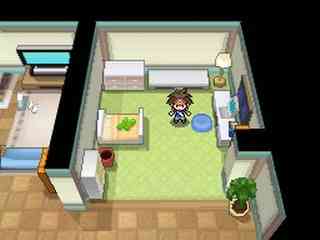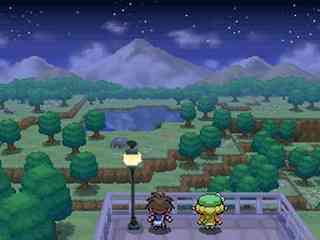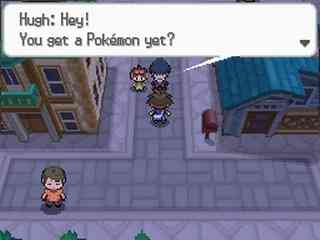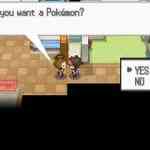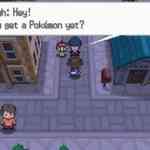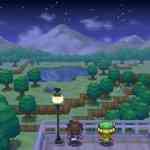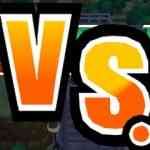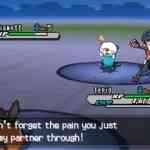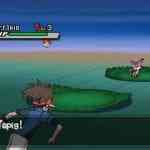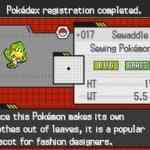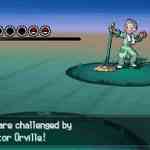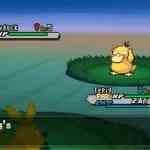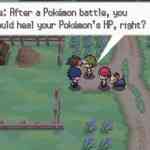Pokémon Black/White Version 2 returns to the Unova region continuing the story from the original games. It is now two years in the future. Team Plasma has been disbanded and two new factions have created: former Team Plasma members who want to right the wrongs they did in the past and a new Team Plasma who are still intent on taking over the Unova region. Counting myself amongst the droves of Poké-enthusiasts out there, a high level of anticipation surrounded the release of Pokémon Black/White Version 2. That being said, having the sequel take place in the same region as the previous games, and knowing that the basic gameplay of Pokémon titles generally remains consistent title to title, I was skeptic that the title could be re-invented and made fresh and exciting; however, with several new gameplay modes and features being announced I still hoped there would be enough to provide a steady stream of entertainment and countless hours of fun, something that I have come to expect from Pokémon games.
As with many Pokémon stories you begin by leaving the nest and embarking on your first Pokémon adventure. Your mother is friends with Professor Juniper and she would very much like it if you could fill up a Pokédex for her so she can see if the concentration and location of Pokémon has changed over the last two years which was when the original game concluded. Of course you accept your assignment and your journey begins, which coincidentally is at the same time as your neighbor start on their adventure. Your neighbour seems unusually critical of fellow Pokémon trainers and their care they offer their Pokémon. As you progress through the game, you and your neighbour’s story, and that of the Unova region and Team Plasma will unfold. To avoid any unintentional spoilers its best we leave it at that.
Gameplay is made up of one part Pokémon researcher (Pokédex) and one part Trainer, hoping to collect all eight gym badges. At the beginning of the game you will undergo a brief tutorial storyline which teaches you the basics of finding, battling and capturing Pokémon, accessing menu options like your Pokédex and bag, and how to heal your Pokémon at the Pokémon Center. Movement within the game is controlled by the D-Pad on the DS/DSi or the analog stick on the 3DS . The B button is used to run, and you’ll find that this will become something of a preference as to whether you use it or not.
On the research side of things you will make use of your Pokédex, an in game handheld computer that analyzes Pokémon when seen and gathers even more information if a Pokémon is captured. As an added and welcomed bonus, the Pokédex has been revamped to include a Habitat section. The Habitat section lists all of the locations that have been passed and which Pokémon should be available to catch in that location. After collecting all the Pokémon in that location you will be awarded with a Pokéball stamp. What makes this addition great is the fact that you can now seriously complete your Pokédex, knowing which Pokémon you are missing and where they are found. In the past fans have had to endure a long list of Pokémon numbers with a series of question marks where their names should be. Apart from the Pokémon I naturally came across while playing past editions, the Habitat section gave me motivation and inspired me to try to collect those Pokéball stamps.
For those not familiar with the Pokémon franchise of games, Pokémon can be found in the wild in tall grass, inside caves, in dark sand or in water. They are also found during different seasons or time of day. They can be captured with varying degree of difficulty by lowering their HP and using a variety of Pokéballs. Pokéballs can be found or they can be purchased at the Pokémon Center. Different types of Pokéballs will have different effects when trying to capture a Pokémon. For example, a Heal Ball will heal the Pokémon once it has been caught. Special or less abundant Pokémon can sometimes be found in rustling grass, hidden grottoes, dust clouds or rippling water, and the rarer the Pokémon the more persistence you will need to complete your Pokédex.
As a Trainer, you will strive to train your Pokémon so that they can trust you and become powerful, andeven evolving through battles, leveling up, or through the use of stones. Adding Pokémon to your travelling party is accomplished by capturing wild Pokémon. You can also trade for them in game or through the C-Gear functions (described in detail later). Party Pokémon can be used in all battles from wild Pokémon, battles with trainers you meet along the way, or in gym leader battles. Any Pokémon that is captured that cannot join your party will be sent to your storage box in the computer. In addition to the wild Pokémon battles, you will also meet other trainers in-game who want to test their mettle against your training skills and ultimately have a battle. There are several types of battle styles you may come across including Single Battle, Double Battle, Triple Battle and Rotation Battle.
Single Battle is the predominant form of battling where two Pokémon face off against each other and the winner is decided when a Pokémon is fainted, or in the case of Trainer Battles when all of the Pokémon that trainer has are all unable to battle. Double Battle is much like Single Battle, but trainers are able to use two Pokémon at once.
Triple Battle, as the name indicates, allows trainers to use three Pokémon at once, but the distance between Pokémon comes into play in Triple Battle. The Pokémon in the middle position is able to attack any of the other trainer’s Pokémon and the Pokémon in the left or right positions might be able to still attack the other Pokémon depending on the move used. This is where shifting comes into play; trainers can choose to “shift” their Pokémon from the left or right positions to take the place of the middle Pokémon to give them a better position.
Rotation Battle is the other new type of battle where you choose three Pokémon to battle against another set of three Pokémon. Only one Pokémon can act every turn, but you choose which Pokémon using a rotation system to move the Pokémon you want to battle up to the front. Moving your Pokémon back and forth and using the right type of moves to bring down the other team becomes even more challenging as your opponent is rotating their Pokémon back and forth trying to get in the right moves as well. There are moves that Pokémon can learn that will assist and enhance each other’s moves in battles where there are multiple Pokémon, so keep that in mind when forming your strategy.
Ultimately all the different battles are used to help you prepare to challenge for a Gym Badge or prepare you for the Pokémon Tournament in Driftveil City. In the Pokémon Tournament you can compete against gym leaders and other notable characters in a tiered elimination style tournament with your own, or rented, Pokémon. This tournament is new to the game and was both challenging, especially when using Pokémon you were unfamiliar with, and a lot of fun. If you win the tournament you will earn BP’s that can be used to purchase special items. BP’s can also be earned at the Battle Subway in Nimbasa City depending on how well you do against the other trainers on the Subway. Special items can also be found throughout the game and can sometimes sway the battle in your favor. Items can be found on the ground, using your Dowsing MCHN (a device that locates hidden objects) or can be given to you by people you speak to. Particularly special items include colored shards that can be traded at select Move Tutor locations to learn powerful moves for your Pokémon.
Collecting things is definitely a theme in this game as special items, Pokémon, and now even Medals can be collected from Mr. Medal. As part of a Medal Rally you are challenged to complete certain objectives during your travels to earn medals. Your initial goal is to collect 50 medals (trainee level) and there are over 250 medals total available. The actual objectives are initially hidden from you unless Mr. Medal provides you with hint medals. Hint medals give you an idea of what you need to accomplish to earn your medal. I found this addition to the game enjoyable and spent quite a bit of time trying to earn medals, constantly returning to the Pokémon Center to see if Mr. Medal would be waiting to award me a new one.
When not collecting medals and looking for something outside of Pokédex and Trainer gameplay you can visit the Pokéstar Studios or the Musical Theatre. Here you are able to act out movies or take part in a musical with Pokémon in your party or those you rent. To achieve success at Pokéstar Studio you must interpret the provided script and perform accordingly selecting the right moves and the right quote for the scene. At the Musical Theatre you interpret the Musical and then dress up your Pokémon accordingly, which if done correctly will get you rave reviews. If you are very successful you will earn fans. Fans may give you special props or may meet you at Join Avenue. Join avenue is a new location in the game and resembles at an unoccupied strip mall at first. As more fans and people you pass visit the avenue it will fill up with a variety of shops ranging from raffle shops to dojos.
Pokémon Black/White Version 2 also features a variety of online and Wi-Fi functionality. At the Pokémon Center you can access the Union Room, Pokémon Wi-Fi Club and the Global Terminal. The Union Room allows you to connect through wireless communications to Battle and Trade your Pokémon. The Pokémon Wi-Fi Club is essentially the same as the Union Room but allows you to connect on the Nintendo WFC with trainers you have exchanged friend codes with to battle, trade and chat with. Global Terminal expands on the Union Room and Wi-Fi Club by bringing battling and trading to a global scale allowing you to compete in Random or Ranked Battles and trade Pokémon with anyone in the world.
C-Gear is another feature that uses wireless, online, or IR communications. Under the wireless section you can use the Xtransciever to contact friends you have exchanged codes with. The Xtransciever is also present in regular gameplay and you can use it to call Professor Juniper, Bianca, Cheren, Mom and your neighbor. When you call someone in game you may learn important facts that will help you. Professor Juniper will tell you about the evolution of the Pokemon in your party, how they can possibly evolve by leveling up, using specific stones or other circumstances. Cheren will help you understand the strength and weaknesses of the types and moves of your party Pokemon. Bianca will evaluate the friendship level of you and your party Pokemon. You can also call Hugh and your mom to talk. Using the Xtransceiver during gameplay was fantastic as it helped me remember the strengths and weaknesses better and simplified some battles that may have been more challenging.
The wireless section also contains the Entralink. When you warp to the Entralink you are able to access Funfest Missions by speaking with the Entrée at the center of the grove. Funfest Missions take place in Unova; you have a set time limit (usually three minutes) and an objective such as collecting berries or competing against a set number of trainers. If you complete the mission you will earn pass orbs that can be spent on pass powers such as HO restoring power, EXP, Point Power, etc. Pass powers can be used by aiming at people you pass with the Tag Log and can also be joined by others through the Tag Log in the C-gear. A great feature of these missions is that if you pick up items such as berries they will be stored for you and can be used in regular gameplay. You can add additional missions to those available by speaking with people throughout the game. Also in the C-Gear is the Infrared function which allows you to trade Pokémon and battle them with a friend in the same room as well as doing Feeling Checks to see how compatible you are with them.
The game is set in the Unova region, which is home to great cities, small towns, an array of different routes to travel, dark and scary caves, high bridges, and even wonderfully wet waterways. All of these provide a perfect setting for this title. Given that the location is the same as the original games, the graphics have stayed relatively the same compared to the last release. All of the areas are so well designed, be it in the use of colour and lighting, choice of architectural style, or overall theme, they lend to the gameplay beautifully, setting the stage for the action about to take place.
One of the great features relating to the appearance of the graphics is that they are influenced by things such as time of day (morning, dusk, night), seasons (spring, summer, fall, winter) and even by weather or environmental conditions (rain, sandstorm). If you play at a time that reflects night you will notice that it is darker and you may even see streetlights on. In fall you can see the change in the appearance of the trees and in winter the snow falls along the routes. Weather and environmental conditions are visible, most commonly rain falling from the sky and sand blowing all around the desert locations. These ever changing details help prevent visual boredom and also play a part in the overall gameplay.
In my opinion, the best graphics in the game are the Pokémon themselves, the variety of moves they use, and the status effects they create. It has always been the hundreds of different Pokémon, the unique way they were designed and how their design matches their names (picture Pignite: a pig, looks like a knight and is a fire type sure to ignite his surroundings) that have captured my imagination and thus my fascination with this series. In addition to their individual appearances, all moves used by Pokémon have their own visual representation. For example, Surf is depicted like a large tsunami wave attacking the opponent or Leaf Storm with its handful of leaf blades hurled at the target. All status effects such as poison or confusion well depicted, as your Pokémon becomes purple and ill or tiny ducks circle their head.
Throughout the game you will encounter unique locations such as Pokéstar Studios or the Musical Theatre where you will have a chance to view your Pokémon “perform” in a very different way by means of cut scenes and comic book style animations. You can watch your Pokémon star in their very own movie and defeat the bad guy or watch them twirl around on stage in their newly created costumes. There are also a variety of cut scenes in the game that help tell the story or just add to the visual richness of the game such as the scenic boat tour you take on the Royal Unova.
Overall the graphics make up an integral component of any Pokémon game and in Pokémon Black/White Version 2 the visuals stay true to the standard design while adding exciting new components. This seems to be a winning combination here, and I have to say that the game looks great for a DS title.
The music throughout Pokémon is instrumental, and where the graphics set the stage the music truly sets the mood. There is an immense amount of variety in the playlist from quaint seaside villages, bustling cities dark caves and other areas all having their own musical melodies. During battles the music is fast paced and exciting as the Pokémon duel it out to see who comes out on top.
Sound effects are at every turn with the sounds of your Pokémon unleashing their unique cry as they enter battle to the sound of each individual attack, such as Air Slash that sounds exactly as the name would imply, a slash cutting through the air. Weather or environmental conditions can be clearly heard above the music from the pitter-patter of the raindrops or the whooshing of sand in a desert storm.
Even the smallest of details have been covered like the sound the PC makes when booting up, the sound of your footsteps on the sand, and even Pokémon rustling through the grass. This attention to detail is also demonstrated when it comes to the Musicals you can take part in when you are visiting Nimbasa City. From the theme appropriate music to varying intensity of the claps from the audience when they enjoy something they see on stage. Overall the sounds are abundant, well chosenm and make this one of the rare titles I can play with the volume up rather than shut off in disappointment.
Pokémon Black/White Version 2 is jammed packed with so many gameplay options it is easy to get lost in the title for hours on end. You can speed through the story or take your time to fill up your Pokédex and still have many more activities to try out including a multitude of online and wireless activities. The title definitely packs a heck of a lot of bang for your buck and wins the top spot out of all Pokémon titles in my books. At the end of the day, if you are a fan of the series or not, this latest Pokemon title is a must have game for the DS, plain and simple.


